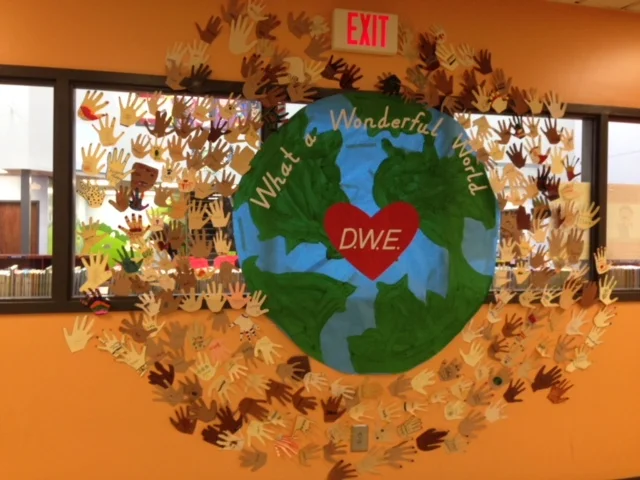I have a new English learner in my class AND... (Part I)
"I have a new English learner in my class AND I have no idea where to start helping him. He speaks Japanese only and I'm at loss what to do with him in our 4th grade classroom. Please, help!"
Empathy
This scenario might be the most familiar scenario I encounter as an ELL coach. And I wish there was a ONE ANSWER FITS ALL but that's impossible. Teachers usually shares with me how nervous and lost they feel to have someone who doesn't speak the language and it feels like an overwhelming task. I get it. I understand. If we adults feel this way, can you imagine what is like for that child who has to make peace with the fact that he will be feeling lost for months and months until he has an idea of his new surroundings. Starting with the child in mind, changes all perspectives because it makes us more empathetic teachers. It puts things in perspectives and propels us forward to go the extra mile for that child.
Safety and Belonging
Feeling safe and that you belong are two of the most important feelings when it comes to newcomers. This should be high on the priority list of every educator. Regardless of the level of English proficiency that his child has, the basic needs are universal. The first week of school for an EL child who doesn't understand the English language yet is about making sure this child feels safe, feels seen and heard. One of my favorite kind of meetings is what I call a "Welcome meeting" to the family of my new students. The purpose of the meeting is not only to officially welcome the family to our school, to my classroom but also to get to know them as a family. This is usually accomplished with the support of an interpreters but it's one of the best investment of time.
Some of the questions I might ask include:
“What are some of the things your child enjoys doing the most?
What are some of your chid’s favorite books? genres?
What was his/her experience in his/her last school?
What are some important things from your country/culture that you would like us to know?”
You might have other questions that are relevant to you. These questions are meant to be a starting point for conversations and inspiration. The important points to remember is that we want this new family to feel seen, hear and feel welcomed to their new school. Depending on what you learn from this conversation, you can make adjustments in your classroom. For example, you might learn that the child is very interested in basketball, loves math, and enjoys drawing. To you, this might mean borrowing some basketball books from the library so this child can browse during independent reading. It might means, you set a side a drawing pad and some colors so whenever the EL child needs a brain break, he/she can draw. In Math, you know to keep your eyes very open to signs of blooming and be ready to be led by the child.
Classroom Ambassadors
When a new EL child enters the classroom, it can be very overwhelming to try to figure things out, putting pieces together, making adjustments and modifications while also showing how school works to this new EL child. However, this task does not need fall 100% on the teachers' shoulders. I do believe that this is when a community comes together. As teachers, we work very hard, especially on those first 6 weeks of school establishing routines, norms and guidelines that will set the tone for the rest of the year. However, building classroom communities is a year-long commitment for teachers and children. It's an ongoing process as you learn how to work together. This is where having classroom ambassadors in the classrooms are a wonderful opportunity for them to take some responsibilities and own the process of welcoming a new child in the room. Some of the duties that your classroom ambassadors include:
“Showing the new EL child the school by using photos, basic words. For example; saying” this is the cafeteria. We eat lunch in the cafeteria” and point to the picture of food, and a card stock with the word “cafeteria”
Sitting with the child during read aloud time.
Creating a stack of basic vocabulary words with pictures (bathroom, help please, thank you, etc)
Showing the new EL child how the books are organized in the library.
Using an iPad, classroom ambassadors can make short videos explaining different parts of the classroom, or what a day’s schedule might look like.
”
The important thing to remember about classroom ambassadors is that this is a wonderful opportunity for students to own the classroom community, to be an active participant in society. People moving, coming and going are real life events and school is a great opportunity to practice some of the skills that are helpful to understand in situations like these.
As the adults in the room, it's important for us to remember what does it feel to be new. Even if we might not be able to completely grasp the depth of a move like the the ones many of our ELs are facing, it's part of our responsibilities to stay calm, focused on the child and not so much on ourselves (not yet). The priorities should include making sure the child feels safe, seen and heard. Establishing "classroom ambassadors" and implementing "welcoming" meetings are strong beginning. In part II of the post, I'll walk you through the academic part of the day and what it might means for the new EL child in your classroom. For now, please take the time to consider these social-emotional support systems that I can guaranteed you makes a difference!



